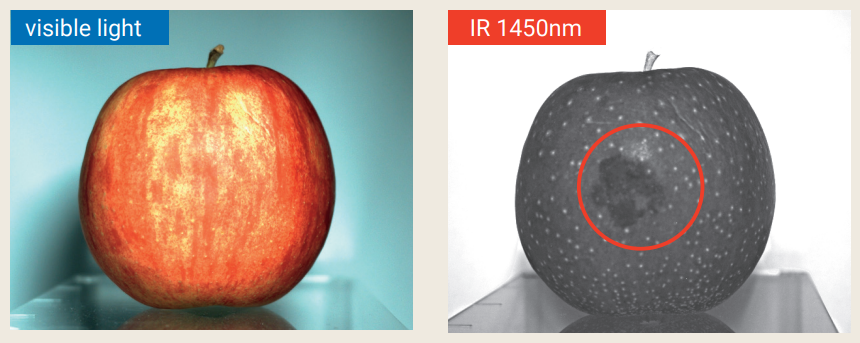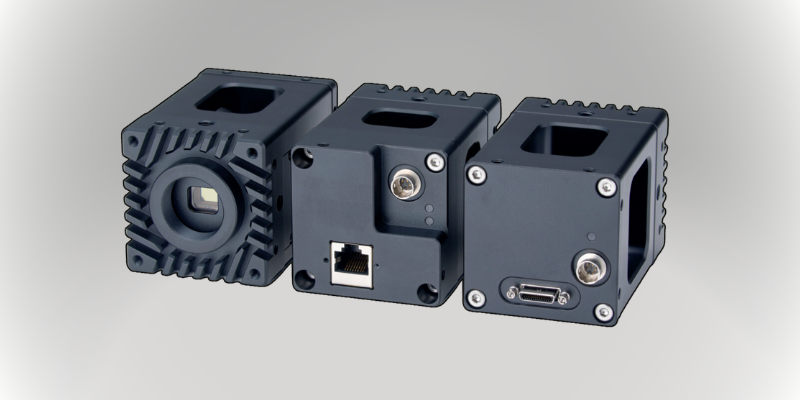Omron Automation Introduces Its Latest Short-wave Infrared Camera
Omron Automation's latest camera uses short-wave infrared technology to produce higher-quality images without visible light, alleviating ambient light challenges and expanding inspection possibilities.
Omron Automation, well known around the globe for automation components, has introduced a short-wave infrared technology camera to alleviate the stress of standard vision systems and open up a greater range of inspection applications.

Omron’s short-wave infrared technology being used to inspect a product through its packaging. Image used courtesy of Omron Automation
Inspection With Machine Vision
Industrial automation vision systems are commonly used for part detection, defect detection, and part location. A typical vision system will include a camera, controller, and lights. The purpose of the lights is to flood the inspection area with constant, unobstructed light.
While bright, the ambient light in most factories is often blocked by operators, equipment, or even washed out by other lighting sources. Machine vision lighting can be extremely bright, and the light color chosen can sometimes cause operator fatigue.
What Is Short-wave Infrared?
Light is visible in different colors because of light’s different wavelengths. Each color represents a different wavelength, and as the color of light changes, so does its wavelength.
Sitting outside of human visibility is infrared light. While near-infrared light has a wavelength range between 780-1,100 nm, short-wave infrared (SWIR) light has a range between 1,100-3,000 nm. Though not visible to the human eye, SWIR can be used to produce high-quality images with specially designed cameras.
Omron Automation’s Short-wave Infrared Camera Series. Image used courtesy of Omron Automation
SWIR Camera Series
To use SWIR, a camera capable of processing the short-wave infrared wavelength is required. Omron Automation's newest SWIR Camera Series is designed to do just that. The SWIR camera uses the Sony Pregius IMX990 and IMX991 SWIR sensors and includes a fanless cooling design that utilizes Omron’s passive cooling technology.
Users can choose from three communication interfaces, GigE Vision, USB3 Vision, and Camera Link, and two different resolutions: 0.3 MP or 1.3 MP. The SWIR camera is compatible with standard machine vision software, short-wave infrared lenses, and lighting.
Machine Vision Lighting
Lighting in a vision system is very important—if there isn't enough light or the light is being washed out by other light sources, the vision tools in the software will not function correctly. External light sources can be filtered out using an infrared light and camera.
For example, typical automation has clear or fence material protecting the operators from moving components inside the station. If the vision system uses an external light source and a forklift drives by with its rotating beacon, the light from that beacon could disrupt the vision system.
Situations like this cause intermittent part failures and are difficult to troubleshoot. By using a vision system that uses invisible light, users can reduce the chance of sporadic failures and long troubleshooting sessions.

The Omron SWIR Camera Series provides companies access to a greater visual spectrum. Image used courtesy of Omron Automation
Inspection at Different Ranges and Stages
The SWIR technology in Omron's latest camera provides greater sensitivity and precision for inspection applications at different visual spectrums, whether inspecting wafers for particles or defects or detecting whether or not an apple is bruised based on its water content.
The technology also allows users to see products through different packaging types, making the SWIR camera usable in all manufacturing stages.







